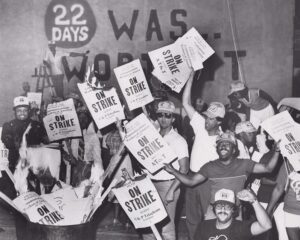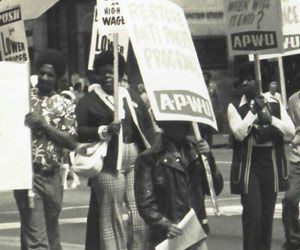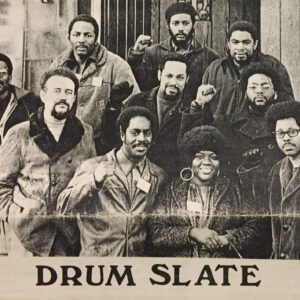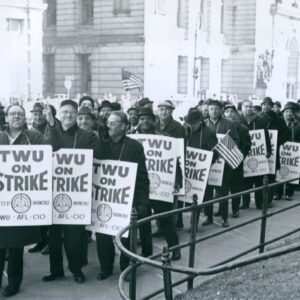August 14, 2025
Labor History: Three Unions Successfully Strike AT&T; Solidarity Wins Newspaper Strike
(This article appeared in the July/August 2025 issue of The American Postal Worker magazine)

August 7, 1983 – After negotiations broke down in a set of expiring union contracts, three unions representing 675,000 workers went on strike at the American Telephone and Telegraph Company (AT&T), rejecting the company’s latest offers.
With 525,000 members, the Communications Workers of America (CWA) was the first and largest of the unions to walk out, starting the 22-day strike. The International Brotherhood of Electrical Workers and the Telecommunications International Union joined shortly after. These workers provided valuable services as linemen, repairers, switchboard operators, and directory assistance personnel. Workers also manufactured phones and telecommunications equipment and developed new technology.
Despite projections of nearly $7 billion in profits that year, AT&T wanted workers to pay 100% of their health premiums, and did not address concerns about wages, job security, or pension rights for workers who were facing the imminent government breakup of AT&T, which was a regulated monopoly and was planning to divest from its subsidiaries in the following year.
AT&T used strikebreaking middle managers to fill in the gaps, working them on over 12-hour shifts. On Aug. 18, the second week of the strike, Hurricane Alicia hit Texas and continued through Oklahoma and Nebraska. It was one of the most damaging hurricanes to impact the U.S. mainland at the time. It caused significant damage to telecom infrastructure, further burdening the strikebreakers. The speed and quality of repairs, installations, and ultimately the telecoms services provided to customers suffered immensely, which forced AT&T to listen to workers’ demands.
The CWA and AT&T reached a national agreement after 22 days of picketing that secured significant wage increases for all workers, cost-of-living adjustments, employee retention, job security, pension changes, and health plan improvements. ■
Solidarity Wins Seattle Newspaper Strike
August 13, 1936 – 35 newsroom workers at the Seattle Post-Intelligencer (P-I) walked off the job to start a strike after the company fired two senior staff members and reassigned others in retaliation for organizing with the American Newspaper Guild. The Hearst Corporation, which has owned the P-I since 1921, was an influential publisher at the time and infamous for its anti-union sentiments. The owner, William Hearst, forbade workers from joining the Guild’s newly chartered local and failed to recognize the union that many of its workers had just joined to improve pay and working conditions.
The striking news workers published a daily tabloid called the Guild Striker, which sold 20,000 copies on its first day and 60,000 copies daily by the end of the strike. Their cause was uplifted by the powerful Seattle Labor Council and the solidarity of workers throughout the city. Seattle was a union town, and hundreds of longshoremen, metal workers, loggers, and Teamsters joined them on the picket line. Teamster leader Dave Beck refused to allow union drivers to deliver the newsprint P-I needed to print on.
With production halted, the company tried shifting printing to Seattle Times’ conservative publisher Clarence Blethen, but their unionized workers refused to cross the picket line, shutting the P-I down for more than three months. By Nov. 25, 1936, Hearst gave in due to national political pressure, labor solidarity, and public support for the strikers, making a deal to recognize the Guild and allowing workers to return with better pay, benefits, and working conditions in one of the first significant and successful journalist strikes in the country. ■



